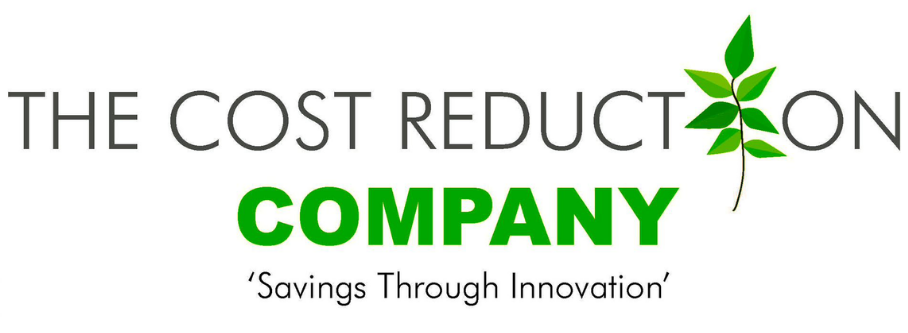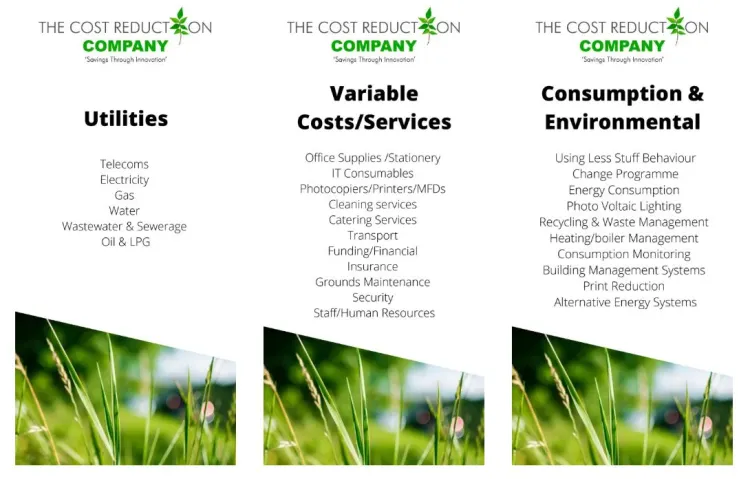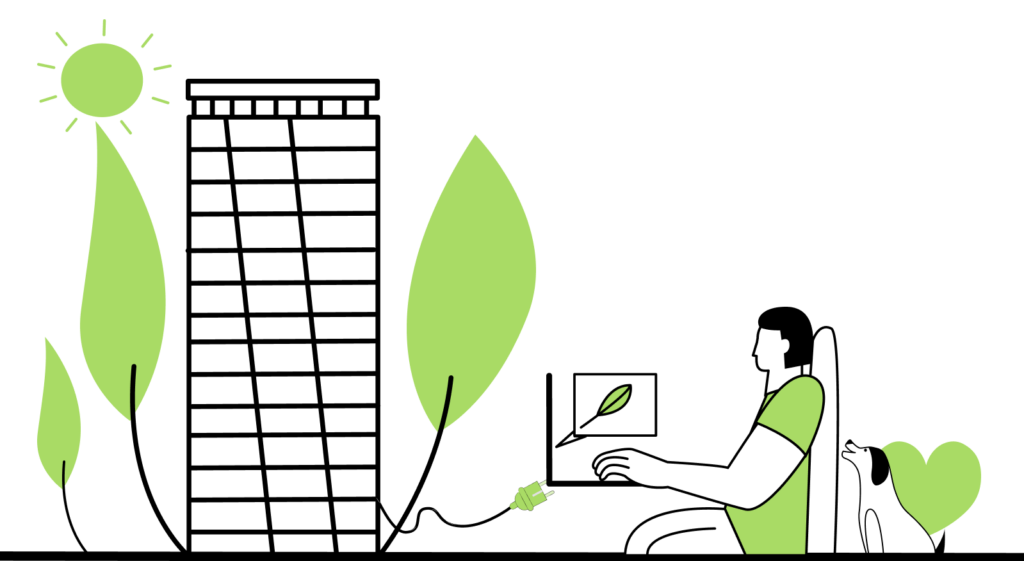In an effort to tackle the challenges of the rising cost of living, what actions can independent school’s take to reduce costs and become more sustainable?
Delivering sustainable initiatives for your independent school
Sustainability is a huge topic for independent schools.
Having been hit hard by the effects of the global pandemic, the subsequent rising cost of living and the world’s drive to be more environmentally friendly – it’s no wonder why efforts to become more sustainable are top of the agenda.
It truly is time for independent school’s to define their future and implement measures to reduce costs, save time and energy, and reduce their impact on the environment.
In this blog, we speak with William Sackville-West, Partner and Nigel Ward, Founder & Managing Director of The Cost Reduction Company, to tap into their expertise of working with independent schools to deliver sustainable initiatives.

So first things first, who are the Cost Reduction Company and what is your mission?
We work with schools, colleges, universities and commercial organisations to help them reduce costs, by a combination of tariff reduction and sustainability initiatives delivering practical and pragmatic solutions.
Our mission is to be the best cost reduction company in our sector and help schools reduce their costs whilst helping them on their pathway to reducing their carbon footprint.
We do this through our programme called ‘Using Less Stuff’.
The key is changing mindset and behaviour.
How do you typically work with independent schools to improve their sustainability efforts?
Alongside practical measures such as supplier price reductions and new technologies, we partner with the entire organisation to transform behaviours and processes.
Generally we assess the 5 key points below:
- Where are we now? – Generate an energy report on usage and carbon footprint report to highlight the school’s current position.
- Measure usage – Implementing metering to track energy usage throughout the school.
- Identify worst performing buildings – Such as swimming pools that require the generation of a lot of energy.
- Highest use buildings – Such as kitchens, leisure centres and laundry, which contain large appliances etc.
- Identify quick wins – Such as; insulation, solar, light as a service (LED), emergency lighting and boilers.
We know sustainability is important, but what do you think will happen if schools do not take measures to become more sustainable?
Quite simply their destiny is increasingly and adversely impacted by factors outside of their control.
Asking parents to cover these factors by continually increasing fees is eventually unsustainable.
Their costs are going to continue to rise and there will be a lot of pressure on parents and the fees.
We are likely to see school closures, especially amongst prep and smaller secondary schools.
It can all sound quite intimidating, but in your experience, how easily can independent schools adopt sustainable practices?
The simple answer is “very”.
Part of the cultural change referred to above is a shift to the mindset of “let’s do next week . . . what we can do this week”
The crucial first step is to clearly understand the schools “where are you now” position.
Thereby we can begin identifying opportunities for immediate positive action, on which to build a longer term, self-funding strategy.
The Cost Reduction Company has successfully managed this so many times repeatedly leading schools through this process.
Do you have any advice for an independent school who is looking to start their journey to become more sustainable?
Start now with identifying your total usage and which buildings are using the most energy.
Put in metering to help you understand the above and communicate with the whole school.
Implement a behaviour change programme like ours (Using Less Stuff) and implement a culture of each individual taking responsibility for their usage.
We need to move from three or four people in each school looking to reduce usage to every teacher, pupil and member of the support staff taking one action.
Imagine if you had 1,000 people taking on action rather than 4 doing it all.
If you’d like to find out more about how The Cost Reduction Company could help your school, visit their website, or email william.sackville-west@thecostreductioncompany.co.uk.

There are some other areas that are often overlooked when sustainability is being discussed, relating to the school’s digital footprint.
We’ve therefore shared some tips below at how school’s can review their digital offering in an effort to be greener with their digital choices.
How can independent schools become more digitally sustainable?
Choosing greener alternatives of the everyday technology used by schools can have a significant impact on a school’s sustainability levels and carbon footprint..
Ultimately, reviewing the technology and infrastructure that each school uses, alongside introducing new initiatives to become more ethical, can help schools to achieve their sustainability goals.
With this in mind, we’ve looked into how this can be achieved.
Replace paper forms and processes with digital counterparts.
Prospectus requests, bursary applications, admissions forms, consent forms… the list goes on.
Negating the need for paper forms means a reduction in printing and material costs for your independent school and subsequently a reduction of the school’s carbon footprint.
Sounds obvious right? But how easy is it?
We utilise Gravity Forms on our WordPress websites, from simple contact forms, through to full-scale admission forms with online payment options.
But there are lots of other form builders out there too, such as Cognito Forms, Microsoft forms etc, that can be used too.
Additionally, a seamless online admissions process will save your administrative team time, and removes the margin for error when translating data from a paper form into the school’s MIS.

Improve performance & efficiency.
Ensure your independent school website design is optimised for UX.
As intangible as your independent school website is, it can significantly impact your digital sustainability.
A website that is badly laid out, has a confusing navigation structure, or an illogical site hierarchy, will increase the amount of time users spend on the site trying to find the information they require.
The more pages a user visits results in more requests being made to the server, meaning that there is more energy generated by your website.
A website optimised for user experience, with a clear navigation structure and adequate signposting, should reduce unnecessary user activity and therefore reduce energy consumption.
And remember, whilst this may seem like a ‘drop in the ocean’, any action that has an impact in the reduction of your organisation’s carbon footprint matters in the grand scheme of things.
For example, if every adult in the UK sent one less “thank you” email per day, it would cut 16 tons of carbon each year.
That’s equivalent to charging 1,946,288 smartphones!
An efficient and optimised site can also save you money on hosting costs by reducing payload size and storage requirements.
Optimise your website assets.
Regularly reviewing and optimising your website code can help you to remove unnecessary and redundant data, reducing the size of the website as a whole.
This can result in a reduction on the amount of energy needed to browse the website, which will also improve your page load times.
A win-win for both the environment and your website users!
You can also optimise your website imagery too for an extra boost to the above.
We use Imagify as an image compression tool on our WordPress websites to reduce the image file size without sacrificing quality.
We would also suggest steering away from uploading video assets to the CMS and embedding them on the website, as this uses a large chunk of energy.
Consider uploading your videos to a platform like Youtube, and use the embed code to place the video on your website.
This means that you’re not using your own bandwidth for video streaming.
Be sure to choose a video hosting platform with a clear sustainability pledge too.
For example, every YouTube video streamed has a zero carbon footprint from Google data centres as detailed in their sustainability statement here.
Switch to green-hosting.
Whether it’s your website, intranet or any other online platform, consider using a green host.
Green hosting utilises strategies that reduce the environmental impact of their activities.
This can take many forms, such as Green Hosting who use renewable energy, Eco Hosting planting trees and supporting reforestation in the UK, or Kualo who champion carbon offsets & power-saving data centres.
Whilst the cost of each green web host will vary according to the provider and your requirements, they are unlikely to cost significantly more than any other host option.
Ultimately, whichever is the best option for your independent school’s commitment to sustainability.

Regularly review software and processes.
Independent school’s are constantly changing.
It’s therefore no surprise that as the organisation changes, as do processes and practices within the school.
For this reason, it is important to regularly review any software that the school is using to understand if any are surplus to requirements to identify any possible cost reductions.
Likewise, each of these third parties who provide the software will have their own sustainability goals, so try to choose providers whose mission and ethos compliment your own.
Educating your school community on sustainable digital practices.
Whilst the previous points have focused on factors concerning online platforms such as the website, much can be said about becoming champions of sustainability and educating your independent school community on ways that they can be more sustainable.
Teaching your staff, students and parents to be more mindful of their internet habits and promoting minor changes, such as streaming videos at a lower resolution, powering off tech when not in use and using audio calling instead of video conferencing, can have a significant effect.

Key takeaways.
Your school plays a crucial role in helping to create a sustainable future for our planet.
Not only through your mission to be more sustainable as an organisation, but also in the education of your school’s wider community.
Implementing a culture in which each individual is responsible and aware of their own usage is an integral piece of the sustainability puzzle.
Because by and large, changing our mindset with a view to reducing our carbon footprint and offsetting some of the damage we’ve done to our planet, is all of our responsibility.
The key for your school is to take those important first steps towards understanding your sustainability performance now, and to make informed decisions about how to achieve a more sustainable future.
